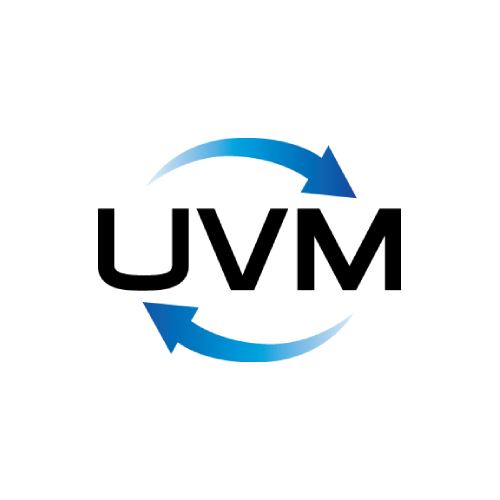
UVM
Universal Verification Methodology (UVM)
We employ UVM for verification services to improve the efficiency of your integrated circuit design validation process. UVM provides a methodical approach to ensure the functional integrity of your ASIC- and FPGA-based products.
We offer consulting, verification, and validation services for your projects, using SystemVerilog for modelling and testing electronic systems. Our team identifies errors and guides how to fix them to improve your solution of any complexity.
Explore the Benefits of UVM
- Faster time-to-market: UVM's reusable components accelerate the verifying process, enabling faster product launches.
- Cost savings: Optimised resource utilisation and reduced UVM test bench development effort resulted in cost savings.
- Scalability and flexibility: We seamlessly verify IP blocks, subsystems, and full-chip designs, adapting to the growing project complexity.
- Industry standards compliance: UVM aligns design verification practices with industry standards, enhancing collaboration and interoperability.
- Efficient issue resolution: The verification process can be organised in any SystemVerilog-supported simulator, making it easy to identify issues.

Where UVM Excels in Design Verification
Communication and networking systems
Automotive electronics and ADAS
IoT devices
Medical electronics
Video broadcasting systems

Industrial automation and control systems
High-Performance Computing (HPC)
Robotics
Сonsumer electronics
Multimedia processing hardware
Our UVM-Related Services
![]()
UVM FPGA and ASIC/SoC verification
![]()
Constrained Random Verification (CRV)
![]()
Modules, IP-cores, subsystem, and system levels verification using UVM
![]()
Functional and code coverage gathering, analysis, and improvement
![]()
Design requirements analysis and architecture review
Technologies We Employ
Mixed languages
SystemVerilog, Verilog, VHDL, SystemC
Tools
VCS, IUS, MBD
Why Promwad

In-depth expertise
Our engineers have vast experience handling the intricacies associated with UVM. We tailor the methodology, test bench architectures, and verification strategies to align with your project's specific challenges.

Reusable VIPs
Accelerate test bench development with our extensive library of pre-validated VIPs. Our UVM design verification engineers work on expanding the collection with each new project.

Coverage analysis
Our advanced coverage-driven methodologies ensure thorough analysis of functional coverage metrics, identifying and addressing any gaps for a reliable and robust verification solution.
Our Engagement Models
Time & Material
– Payments for actual hours worked
– Regular reporting of time and results
– Regular communication with the team
– Connecting / disconnecting engineers on request
– Flexible development process
Dedicated Team
– Fixed monthly costs
– Custom-built team with specific competencies
– Fully dedicated engineering team
– Comprehensive IT infrastructure
– Max efficiency for complex projects
Project-Based
– Budget control
– Reduced risk
– Flexible resource allocation
– Clear scope
– Predictable timeline
– Quality control
Do you need a quote for your verification solution?
Drop us a line about your project! We will contact you today or the next business day. All submitted information will be kept confidential.
FAQ
What are the key advantages of adopting UVM for verification compared to traditional ad-hoc methodologies?
Uniformity: UVM ensures consistent and structured verification practices, improving quality and efficiency. This is particularly important in embedded development, where devices often have unique hardware configurations or specific device driver development requirements.
Reusability: UVM implies the reuse of components, enabling faster test bench development, reduced effort, and increased productivity.
Scalability: The methodology supports verification at different levels of abstraction, allowing a seamless transition from UFS flash IP blocks to subsystems and full-chip designs, ensuring high-quality and efficient results.
What are the challenges typically encountered when transitioning from traditional verification methodologies to UVM?
Learning curve: Adapting to the new methodology requires familiarity with its concepts and SystemVerilog. There may be a learning curve for engineers, hence the importance of employing the knowledge of experienced UVM design verification engineers.
Tool and infrastructure migration: Integrating UVM may require adjustments in existing toolchains and infrastructure, which cause implementation challenges during the transition process. At Promwad, we have extensive experience working with UVM verification methodology to enhance systems of any complexity for our clients worldwide.
Verification approach shift: Embedded UVM introduces a new way of structuring and managing environments, requiring a change in practices, which may initially present challenges.
How does UVM support the verification of different design abstractions, such as RTL, gate-level, or even higher-level designs?
UVM's modular and scalable approach enables engineers to create reusable verification components and develop thorough test benches for each design abstraction, including RTL, gate-level, and higher-level designs.
- Test bench hierarchy: The methodology allows the creation of hierarchical test benches, enabling the reuse of testbench components and providing scalability across various design abstractions.
- Abstraction layers: A layered architecture allows engineers to define abstraction-specific components, such as virtual sequences or interfaces, facilitating verification. This abstraction layering is essential in Android BSP development where different abstraction levels are common for various device components.
- Interface-based verification: UVM's interface-based methodology facilitates seamless integration and communication between design layers, ensuring efficient data and control signal exchange.
How can UVM be leveraged for verifying designs with mixed-signal or analogue components?
Behavioural modelling: UVM enables the creation of behavioural models in SystemVerilog or SystemC for mixed-signal or analogue components.
Analog verification extensions: The availability of different approaches, such as Analog Mixed-Signal (AMS) extensions, facilitates integrating and verifying mixed-signal components within the overall framework.
Co-simulation and Verification IP (VIP): UVM supports co-simulation with analogue simulators and VIP creation for mixed-signal interfaces.
Customisation and adaptation: The methodology's flexibility allows engineers to customise and adapt it to cater to specific requirements, ensuring effective verification strategies.
